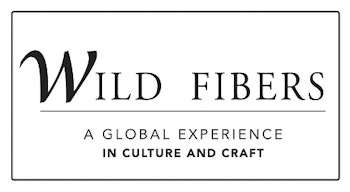Contents
- The Year of Glaciers
- What Do Glaciers Have to Do With Natural Fibers?
- How Can I Join In?
- Cashmere on Ice Contest FAQ
- What is this contest about?
- How is this contest helping?
- Are other fibers besides cashmere included?
- What is the gallery, and how is it different than the contest?
- Can I follow someone else’s pattern?
- Does my submission have to be handmade?
- Where are some sources to get cashmere?
- What is the “Best of Ladakh” category?
- What categories can I enter?
- How many items can I submit?
- What dates do I need to be aware of?
- Where do I ship my entry?
The Year of Glaciers
More than 2 billion people, including many fiber producers, rely on melt from glaciers and snow for their very survival. Rapidly disappearing glaciers endanger not only the environment but also these people who depend on them for their fresh water, food, livelihood, and other basic needs.
Recognizing the global impact of glaciers, the United Nations General Assembly has declared 2025 the International Year of Glaciers’ Preservation.
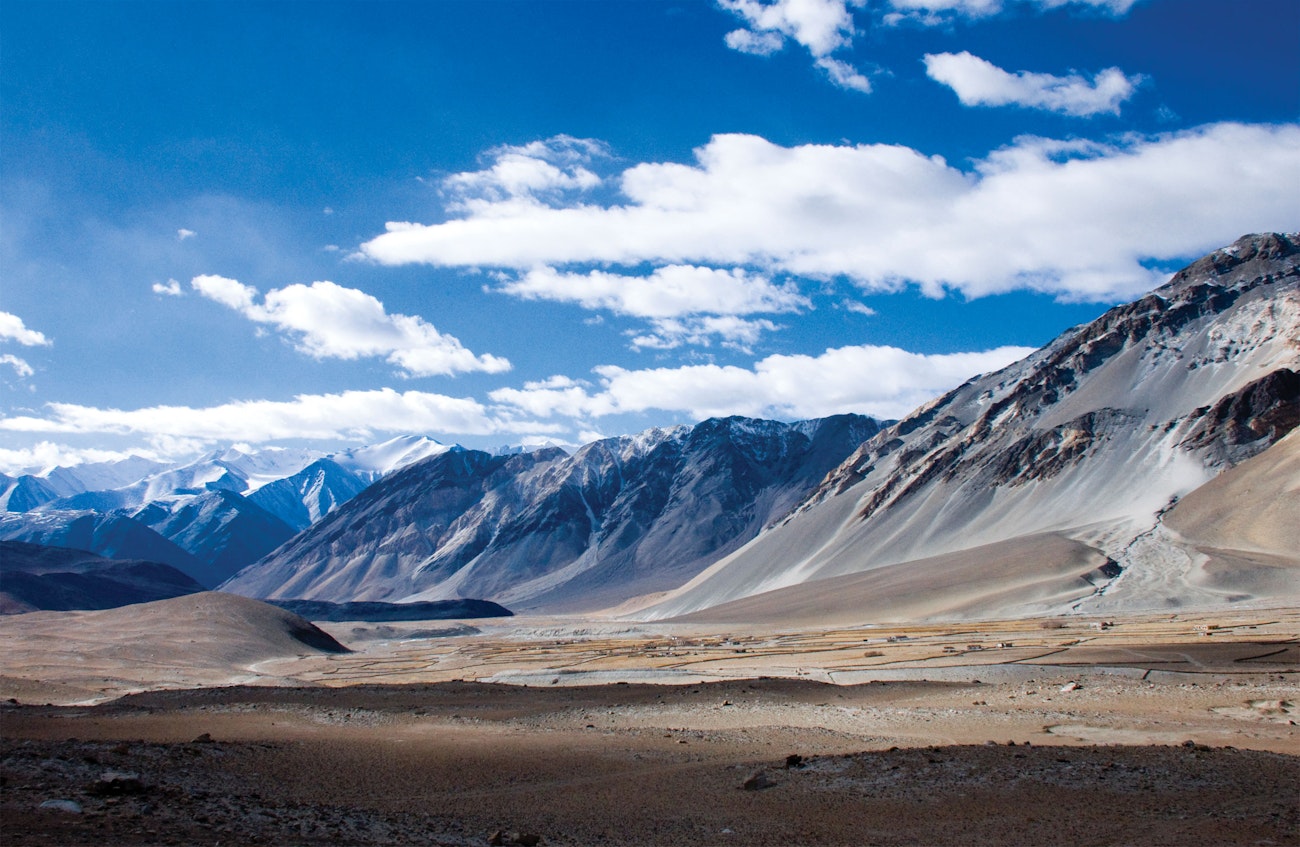
The breathtaking view from the Pangong Craft Center in Ladakh, India.
What Do Glaciers Have to Do With Natural Fibers?
Many fiber animals, including cashmere goats, yaks, vicuñas, guanacos, and other fine-fiber animals, live in high-mountain regions, including the Himalayas. Water that melts from glaciers is essential for these herds to survive.
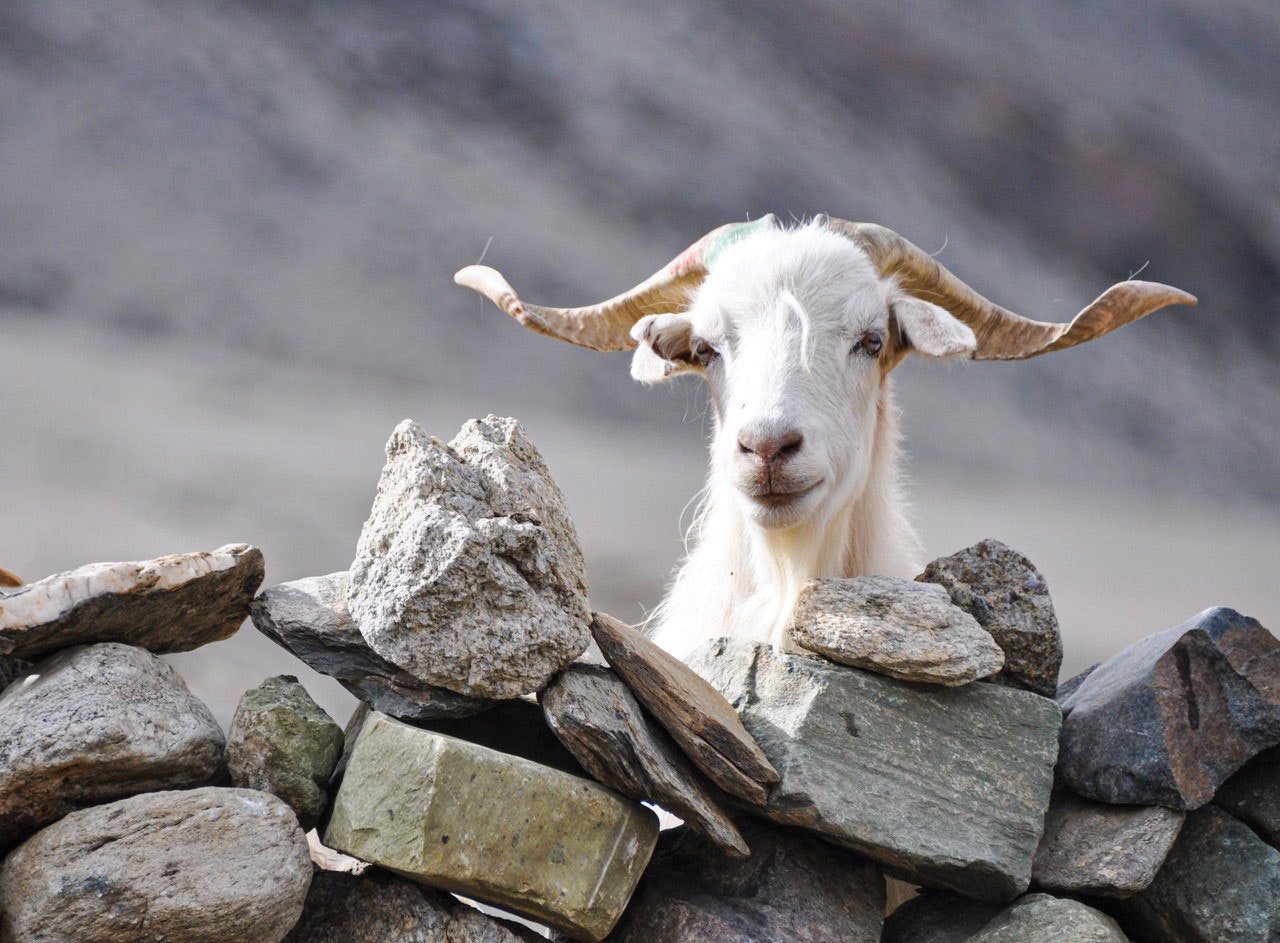
Glaciers provide water for shepherds and herds, such as this cashmere goat.
Living at 15,000 feet is challenging even in the height of summer, especially when finding water is becoming increasingly difficult. Many herders have reported suffering up to a 50% loss of kids in their herds due to water shortage and inaccessibility. The Pangong Craft Center in Ladakh, India, is among those feeling the impact of vanishing water supplies and loss of livestock.
How Can I Join In?
We’re calling on spinners, knitters, and creators like you to join us in raising awareness of the cost of melting glaciers on fine natural fibers. You can get involved by learning more about the Year of Glaciers’ Preservation and joining us in our special showcase contest Cashmere on Ice.
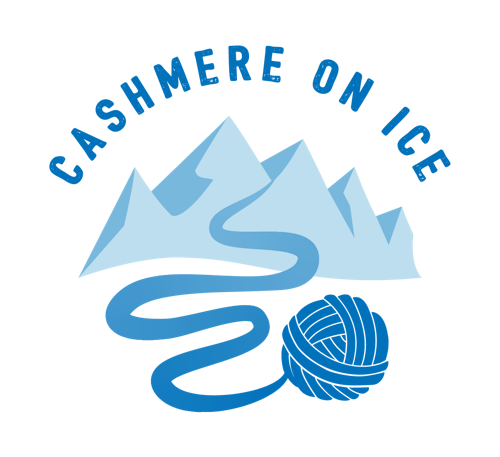
The first step in the contest is to find cashmere fiber or yarn and start creating. Anyone can enter a handmade project to be featured in the gallery, but to be eligible to win a prize, each item submitted must be handmade, at least 50% cashmere, and fit in at least one of our prize categories: Best Wearable, Best Art or Décor, or The Best of Ladakh.
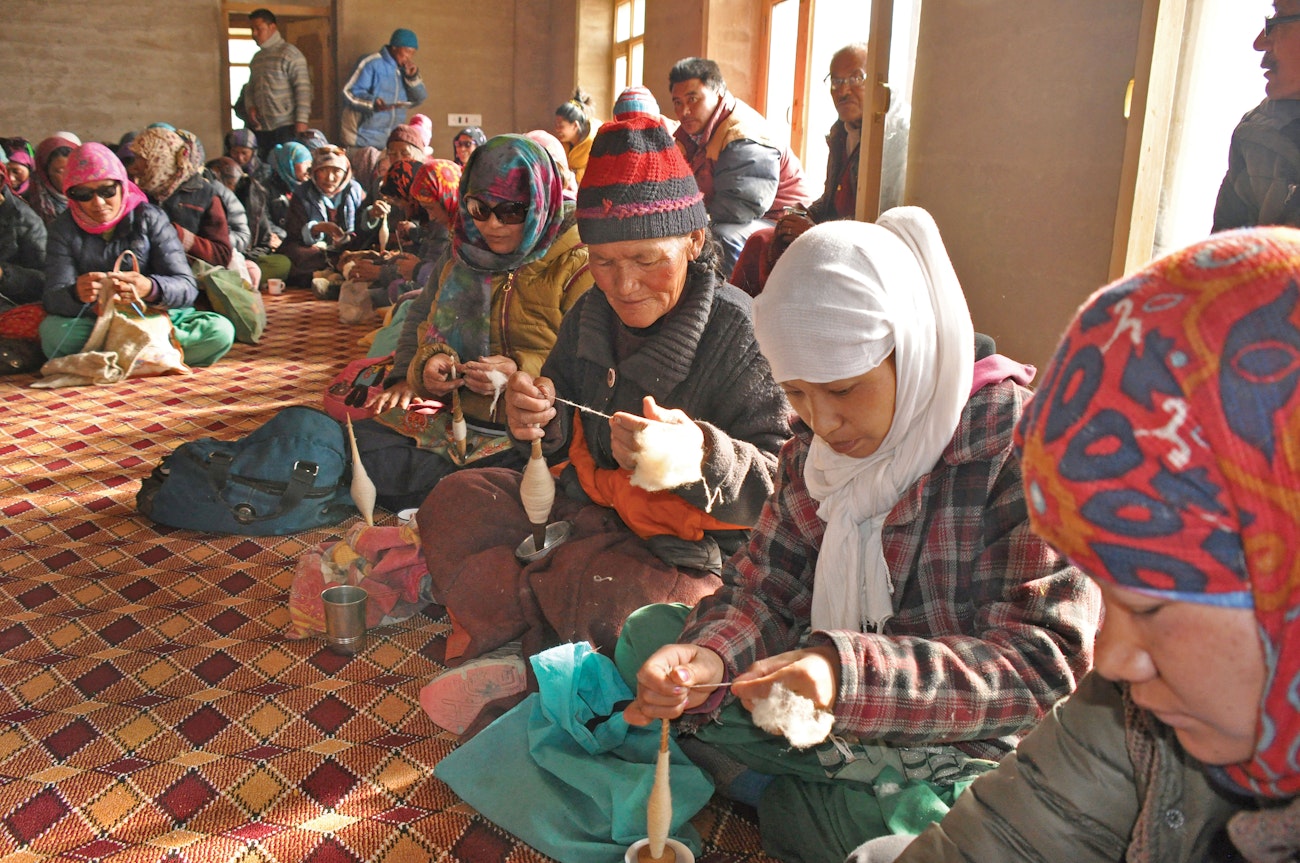
Spinning cashmere at the Pangong Craft Center in Ladakh.
Whether you enter a project in the competition, submit photos of your work for the project gallery, or view the work that fiber artists from around the world create using cashmere fiber and yarn, you can join us to celebrate and raise awareness of the connection between endangered glaciers and precious fiber.
To learn more about the contest, visit our FAQ below and see the contest page for official details and rules.
Cashmere on Ice Contest FAQ
What is this contest about?
- On March 21, 2025, we officially launched Cashmere on Ice, a fiber arts competition in collaboration with Wild Fibers Magazine, to support the United Nations International Year of Glaciers’ Preservation. Shrinking glaciers affect the availability of fresh water and put physical and financial strain on the herders who rely on it. We want fiber artists around the world to use their hearts and creative hands to help promote awareness about the harsh realities of climate change among the herders who provide the world with natural fibers. By creating a project in cashmere for this contest, you can use your dollars and creativity to help raise awareness of the threat to fine fibers worldwide.
How is this contest helping?
- The contest not only brings awareness about the current effects of climate change on herders in high-mountain areas, but also creates increased sales at a time when these herders’ livelihoods are that much closer to the margin. The contest provides both awareness and action. By purchasing and using cashmere in a project, you provide valuable support directly to fiber producers, but you can also help them by spreading the word and getting involved in the International Year of Glaciers’ Preservation.
Are other fibers besides cashmere included?
- The crisis of melting glaciers affects a variety of natural fibers, including cashmere, yak, vicuña, and other camelids. Because of the unique connection between cashmere fiber and the effects of melting glaciers in the Himalayas, and in conjunction with and further support of Sonam Wangchuk bringing a portion of a glacier to the United Nations, this contest focuses solely on cashmere. But preserving glaciers and mitigating climate change benefits all these animals, fibers, and herders.
What is the gallery, and how is it different than the contest?
- The gallery is open to any project or item that you made that utilizes cashmere in any way or amount. It’s meant to unite our global community through this one fiber connection. For the contest, however, projects have more specific requirements. Please visit the official rules page and review the “Submission and Project Requirements” section for more details and eligibility rules.
Can I follow someone else’s pattern?
- The item must be your original work to be eligible for the contest and win prizes. Compositions based on published material or other artists’ work are NOT considered original nor eligible to win prizes. However, you can show off your craftsmanship by submitting any of your handmade items to the gallery (even if they are based on someone else’s design).
Does my submission have to be handmade?
- Yes. Items must be handmade using a traditional fiber art such as knitting, embroidery, weaving, crochet, needlework, or felting. To be eligible for the contest and prizes, items must be made of a minimum of 50% cashmere, which may include millspun cashmere or cashmere blends, handspun yarn, or loose fiber.
Where are some sources to get cashmere?
- For Ladakh fiber and yarn, visit the Pangong Craft Center shop or contact Nomadic Woolen Mills via their Instagram page.
- You can also visit June Cashmere and The Cashmere Goat for premium cashmere yarns.
What is the “Best of Ladakh” category?
- The Pangong Craft Center in Ladakh, India, is among those feeling the impact of vanishing water supplies and loss of livestock. We have special ties to this region through Wild Fibers Magazine, and this category is dedicated to projects that utilize and support this region directly. Visit the Pangong Craft Center shop or contact Nomadic Woolen Mills via their Instagram page to learn where to purchase this special cashmere.
What categories can I enter?
- You can enter your project in as many categories as it’s eligible for, based on these requirements and the official rules:
- Best Wearable (Prize: $148 Interchangeable Circular Needle Set): Awarded to the best garment or accessory (including headcoverings, handcoverings, socks, and bags that anyone of any age can wear or use). This must be a finished project to be eligible.
- Best Art or Décor (Prize: $50 gift certificate for June Cashmere): Awarded to an item used to decorate a home or other space, an art piece, or another item not suitable to be worn on a person.
- The Best of Ladakh (Prize: $500 cash prize): Awarded to an item comprising at least 50% cashmere sourced from the Ladakh region of the High Himalayas.
- People’s Choice (Prize: $200 gift certificate for June Cashmere): Awarded to a qualifying finalist that receives the most votes between September 16, 2025, and October 15, 2025. All finalists are automatically entered into this category. Information on accessing this voting system will be available on the contest page no later than September 16, 2025.
How many items can I submit?
- There is no limit to the number of items you may submit to the gallery or contest, but you may submit each item only once. On the entry form, you can indicate the category(ies) you wish to enter that item. Multiple submissions for the same item will be removed and may be disqualified. Review the “Submission and Project Requirements” section of the official rules to ensure your item meets the requirements.
What dates do I need to be aware of?
- Entry period for submissions opened on April 22, 2025
- Entry period closes at 5:00 p.m. MDT on September 1, 2025
- Finalists will be announced by September 15, 2025
- Voting for the People’s Choice award opens September 16, 2025, and closes October 15, 2025
- Finalist items must be received by mail by October 15, 2025
- Winners will be announced no later than November 25, 2025
Where do I ship my entry?
- Only finalists will send their physical projects for judging. Finalists will be notified by email and given shipping instructions to send their items to Colorado, and all items must be received by October 15, 2025, for final judging. Entrants are responsible for the cost of shipping their items, and the contest sponsors will be responsible for the cost of returning the items after the contest.
This contest is sponsored by Long Thread Media and Wild Fibers Magazine. Thanks to Linda Cortright and Wild Fibers Magazine for the photographs used on this page.





